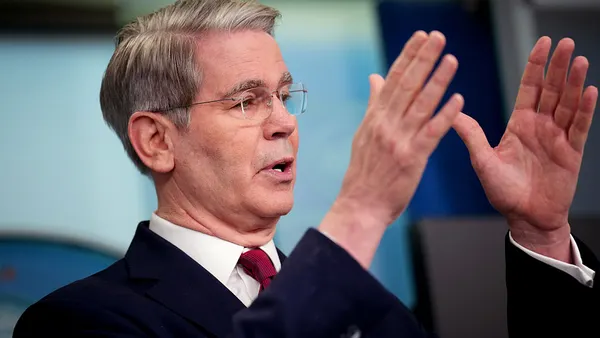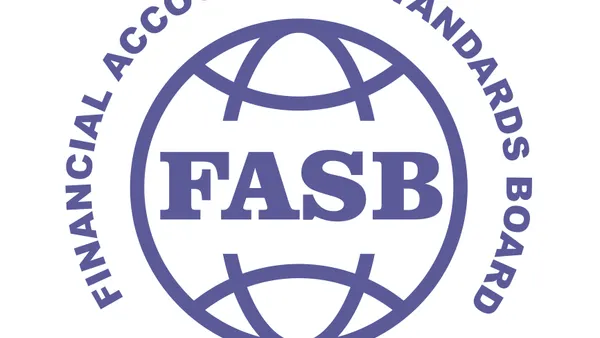Dive Brief:
- Beset by economic headwinds, one in four executive leaders have continued to up the pace of forecasting at their organizations following a trend that began earlier in the pandemic, according to a recent survey by the American Institute of Certified Public Accountants (AICPA) and Chartered Institute of Management Accountants (CIMA).
- The Russia-Ukraine war, persistent hiring challenges as well as inflation have contributed to new challenges in forecasting for financial leaders, with 32% stating they have continued to increase their frequency of forecasting compared to their pacing during the past several years beginning with the pandemic’s onset, according to the Q4 2022 ACIPA & CIMA Economic Outlook Survey.
- The faster pacing comes as 40% of executives surveyed said that the U.S. economy is already in a recession.
Dive Insight:
The complexity of forecasting has also increased as financial leaders grapple with ongoing economic pressures. Twenty-six percent of business executives stated forecasting has gotten “significantly more” complex or difficult over the past year, while 37% said it has gotten “slightly more” complex — compared to only 2% who said forecasting complexity had eased “considerably” over that time.
The frequency of forecasting, which previously was leveling off after an uptick following the start of the pandemic, is back on an upswing as financial leaders grapple with inflation, interest rate hikes by the Federal Reserve, and supply chain uncertainty, Tom Hood, executive vice president, business engagement & growth at AICPA said.
Economic uncertainty is also increasing forecasting complexity, Hood said in an interview — there still remains a gap between labor supply and demand. Reports of record-breaking retail sales on Black Friday and Cyber Monday conflict with the recessionary environment the economy theoretically occupies.
“I think those conflicting economic signals are making companies and their CFOs have to focus a lot more on, ‘what can we project, what can we forecast?’” Hood said. “All those different pieces that are critical to business are in a complete state of flux.”
The survey was conducted between Oct. 25 and Nov. 17 and included responses from 551 CPAs who hold leadership positions including CFOs, who make up 48% of the sample, as well as CEOs, presidents and controllers.
Pricing pressures were one of the key factors contributing to the increase in both forecasting frequency and complexity for executives, especially as the potential of a coming recession creeps close. As well as the 40% of executives who believe recession is already here, 11% expect the economy to dip into one by the end of the year and 17% expect a downturn by the close of the first quarter of 2023.
Optimism about the U.S. economy also hit a new low in the fourth quarter, according to the report, with only 12% of business executives expressing optimism regarding economic trends for the next six months, the lowest level since the recession of 2009, according to the report. This compares to 18% who cited such optimism in the third quarter.
The Federal Reserve has continued its efforts to bring inflation down, with Chair Jerome Powell stating the Fed will “stay the course” of attempting to reach its 2% inflation target in remarks Wednesday.
As well as uncertainty surrounding inflation, labor costs and talent challenges as well as changing consumer demands are all essential factors that contributed to the growing complexity attached to forecasting, according to the report.
For CFOs especially, staffing their finance team remains a major source of pressure, Hood said in a Thursday press release, alongside digital transformation and streamlining of their financial processes.
Hiring still remains a top priority for business executives even as they face mounting labor costs — over 50% of organizations report that they need additional employees, according to the report, while 34% have plans to hire more workers, a level unchanged from the previous quarter.
On a list of top ten challenges facing businesses, however, employee and benefit costs represent the second such challenge — just under inflation, which remains the number-one issuing executives are facing, and just above finding skilled personnel, according to the survey.
This puts pressure on financial leaders especially, who need to weigh the costs of labor against the need for talent— especially digital talent — in their finance departments. “The CFOs, what they're telling us is, they don't have a choice,” Hood said in regards to hiring finance talent. “To get the talent, they have to pay for the talent.”
CFOs are now able to look for skilled financial talent more broadly now, however, Hood said, as they don’t have to “source it in their own backyard per se, where headquarters is,” he said, but that still means “they're having to pay the price, and figure out how to get those savings other places.”
Polling shows financial leaders may be turning more of their energies towards training and upskilling, in fact, Hood said. While typically, the first thing that gets cut in a recession is training budgets, he said, instead what CFOs are saying is “we're going to train on the right skills for the right people, “Hood said. “So we're not cutting our training budget. We're focusing it on the right skills and the right team.”
“What we're finding is that our CFO community is saying, for the first time, they're going to build their own talent,” he said.











